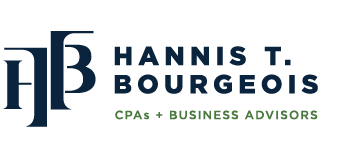A Donor’s Guide to Maximizing Charitable Contributions Post-OBBBA
The One Big Beautiful Bill Act (OBBBA) introduces major changes to charitable giving starting in 2026, offering new opportunities for donors to enhance their philanthropic impact while optimizing tax benefits. Acting now can help individuals and families preserve generosity and improve tax efficiency.
Key Changes Under OBBBA
0.5% AGI Deduction Floor
Starting in 2026, itemizing donors must exceed 0.5% of their Adjusted Gross Income (AGI) in charitable contributions before deductions apply. For example, with a $200,000 AGI, you must donate over $1,000 to begin deducting. This new floor precedes existing AGI ceilings (e.g., 60% for cash gifts to public charities) and includes ordering rules that prioritize less tax-efficient gifts first—potentially disadvantaging high-impact donations.
Donor Strategy Implications
To meet the new threshold, donors may bunch gifts into a single year or frontload contributions. Carryforwards will still be subject to the floor, so strategic planning is key. Modeling annual donations can help balance immediate impact with long-term tax benefits.
Universal Charitable Deduction for Non-Itemizers
OBBBA reinstates a permanent above-the-line deduction for non-itemizers: up to $1,000 for individuals and $2,000 for joint filers. Only cash gifts to qualifying charities count—excluding donor-advised funds and certain entities. This change empowers middle-income donors to benefit from giving, especially those who typically take the standard deduction.
Timing and Strategy: Why 2025 Matters
Accelerating Contributions Before the Floor
The 0.5% AGI floor officially arrives in 2026, leaving 2025 as a potentially strategic window for many donors. Making sizeable gifts before the rule kicks in could maximize the tax savings that would otherwise be diminished by the new deduction threshold. This applies whether you’re giving to a local nonprofit, a religious institution, or an educational foundation.
Consider a donor with a high-income year or a planned liquidity event—such as selling a business or receiving a large bonus—prior to 2026. By donating while higher incomes meet relatively lenient deduction rules (no 0.5% floor), such donors can lock in a larger immediate deduction and carry forward any excess deductions for up to five years.
Itemizers vs. Non-Itemizers
Itemizers must now navigate both the new floor and existing ceilings. High-value, concentrated gifts may offer the best tax efficiency.
Non-Itemizers gain a new incentive to give regularly, even in modest amounts, without needing to itemize.
Additional Provisions
OBBBA also introduces a $1,700 tax credit in 2027 for donations to qualified K–12 scholarship programs in participating states. Additionally, the $15 million lifetime gift and estate tax exemption (indexed post-2026) may shift giving strategies for high-net-worth donors toward annual contributions.
Recommended Strategies for Donors
Planning for Financial and Philanthropic Impact
Donors may benefit from multi-year pledges or “gift bundling” to ensure each contribution exceeds the 0.5% AGI threshold. Larger lump-sum gifts can help cross the floor more efficiently. While donor-advised funds still offer centralized management and flexibility, they remain excluded from the above-the-line benefit for non-itemizers. High-net-worth families might also revisit their approach to family foundations and endowments, weighing immediate tax deductions against long-term philanthropic goals.
Timing Matters When Giving
Running scenario analyses that compare giving in 2025 versus 2026 can help donors understand the potential difference in deductions. Frontloading major support before the new floor takes effect may unlock greater tax benefits and enable larger gifts. After 2026, donors will likely adjust annual giving to surpass the 0.5% mark, especially if they’ve historically made modest but frequent contributions.
Working with Trusted Advisors
Charitable giving under OBBBA is best approached with guidance from qualified tax and financial professionals. Mission-driven philanthropy can still align with tax efficiency, but it requires coordination among accountants, estate attorneys, and financial advisors. Regular reviews and adjustments will help donors stay responsive to regulatory changes and shifts in personal finances.
Looking Ahead and Taking Action
OBBBA introduces significant changes to charitable deductions, making strategic planning more important than ever. The new 0.5% AGI floor reshapes the landscape, while the permanent universal deduction for non-itemizers opens the door for new donors. Each provision carries its own nuances, from ordering rules to carryforward treatment.
The most impactful step donors can take is to stay proactive. The 2025 window presents a unique opportunity to accelerate giving and potentially secure legacy-sized deductions before the floor arrives. Whether returning or giving for the first time, donors should reflect on their long-term philanthropic goals in light of these revised tax rules.
HTB’s tax professionals are ready to help you navigate these changes with clarity and confidence. Contact us today to start building a charitable giving strategy that fits your goals.

